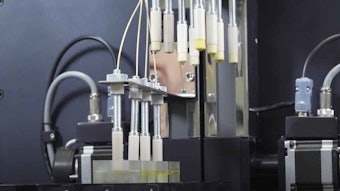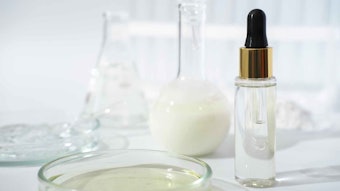Of the applications recorded for nanocomposites in 2005, automotive parts, energy and packaging earned top marketshares of 29%, 28% and 19% respectively, according to BCC Research. And although mainstream use of nanocomposites in personal care is still on the horizon, the right technology could place it in the running as a primary application.
Clay nanocomposites accounted for 24% of total nanocomposite consumption in 2005, followed by metal, metal oxide and carbon nanotube composites. By 2011, clay nanocomposites are projected to reach 44% of the marketshare—and it is this area that provides opportunities in personal care, as recent research by one manufacturer of naturally occurring nanotubes and other nanomaterials, NaturalNano Inc., has shown; specifically, its halloysite nanocomposites. Cathy Fleischer, PhD, president and chief technology officer of NaturalNano, is excited to explore the cosmetic applications for the nanotubes.
Nanotube Discovery
“Halloysite nanotubes are formed naturally by surface weathering of aluminosilicate minerals,” explained Fleischer. “They are composed of aluminum, silicon, hydrogen and oxygen. These tiny hollow tubes, with diameters smaller than 100 nanometers, differ from other clay nanocomposites in their formation—the halloysite nanotubes are tubular whereas other clays are platelike in structure, meaning they are formed in layers, much like a deck of cards,” added Fleischer.
NaturalNano became interested in halloysite nanotubes when it noted their use on US Navy ships. “The Navy initially used the nanotubes for anti-fouling, or to protect ships from barnacles that can slow them down,” said Fleischer. The Navy discovered other applications for the hollow clay tubes by filling them with different materials.
NaturalNano took it from there, exploring a variety of uses for the halloysite nanotubes.
Halloysite Applications
The first personal care-related application researched by the company involved fragrances in laundry detergent. “We filled nanotubes with fragrances for use in laundry detergent and were able to make the fragrance longer-lasting,” Fleischer explained, adding that the shape of the nanotube extended the life of the fragrance by controlling the fragrance’s release with two small holes on either end. Further, the nanotube containing the fragrance was encapsulated.
Preparing the nanotube for actual application begins by surface treating the nanotube. The treatment can involve a range of materials such as salts, depending on the application. Similarly, the material used to fill the nanotube depends on the application. For example, the nanotube could be filled with an active ingredient for skin care applications. If necessary, the nanotube is then encapsulated with a polymer and can be dispersed in oil or water to make a cosmetic.
Nanotubes in Personal Care
NaturalNano is in the early stages of applying nanotubes to personal care, according to Fleischer, who believes that applications in personal care will be similar to that of household care. The company initially filled nanotubes with glycerin followed by vitamin E to investigate each ingredient’s benefits for personal care in a nanotube application. “We have some patents related to putting vitamin E or glycerin into the nanotubes for a skin treatment,” said Fleischer. “We have worked on fragrance in household items but there are still many ideas yet to be researched.”
Other personal care applications could include antiaging skin care, sunscreen, hair care, nail polish and lipstick. In terms of hair care, nanotubes could incorporate vitamin E to impart shine over a long period of time with the tube controlling the shine ingredient’s release. The same would be true in an antiaging cream, where nanotubes could be filled with an active ingredient, allowing the cream to claim long-lasting effects.
According to Fleischer, formulating a product with a halloysite nanotube has two main advantages. First, the formulator can create the prized benefit of a product that lasts longer by housing the active ingredient or main ingredient in nanotubes. The second benefit, according to Fleischer, is cost. “When using nanotubes, you can use less of a material because the tubes are small and control the release of the ingredient,” explained Fleischer.
The company has yet to conduct safety or efficacy tests on halloysite nanotubes used in personal care formulas. Fleischer, however, believes the materials to be safe because of their origin. “Our clay tubes have the same chemical composition as kaolin, which has been used in personal care products and was approved many years ago for ingestion when it was formulated into Kaopectatea,” stated Fleischer.
Moving forward, the company will investigate nanotube applications in personal care and it currently is seeking partnerships to do so. “I think there is great opportunity for nanotubes in personal care,” said Fleischer. “The potential exists to develop some very successful products.”










